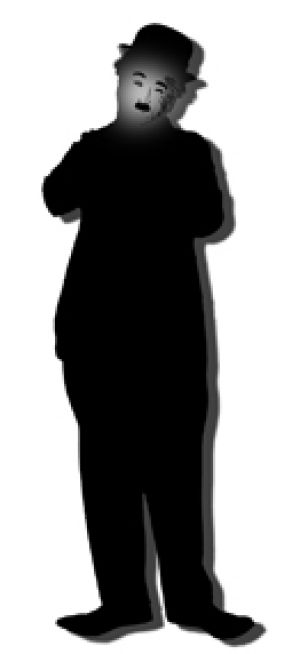The Tramp revisited
February 19, 2007
Ask most anyone today what defined the silent film age, you’ll more than likely get a response like “uhh, no sound.” Ask anyone for an actor from that time period, you’ll probably get the name Charlie Chaplin. Chaplin was one of the most significant people of the silent film era, becoming not only one of the most recognizable personas from the time, but also for laying the foundation for modern day film.
Chaplin’s most unforgettable character was The Tramp, a blundering but kindhearted vagrant who tried to act with the poise of a high-class gentleman. The Tramp was characterized by his derby hat, loose-fitting pants, oversized shoes and the ever-so-famous moustache (which certainly aided to the creation of his Hitler-esque character in the satire “The Great Dictator”). He was seen walking gracelessly due to his unfitting clothing and often fell victim to chance occurrences which began as disasterous but end up working out for the better.
One of the fundamentals of the silent film era was the over exaggeration of facial expressions and body language for means of elaborating on the actor’s emotions and character, which was necessary due to the lack of spoken word. The Tramp’s embellished personal style and eccentricities further developed upon this, not only to portray his emotion, but also to develop his character as a whole.
“The Kid” is Chaplin’s 1921 comedy/drama starring as his key role, The Tramp. It’s the story of The Tramp finding an abandoned boy in an alley and raising him as his own son. As the boy gets older, he and The Tramp bond perfectly and devise ways to con other people. As the film progresses, the boy’s mother begins to do charity work in order to find her son who she abandoned years earlier, which leads to welfare agents finding and taking him away from The Tramp. One of the films most remarkable scenes is the rooftop scene when The Tramp is chasing the agents who took the Kid, followed by their moving reunion.
“The Kid” is probably one of the first films to successfully create an amalgamation of both comedy and drama, something which would be presumably difficult without the use of dialogue. Chaplin directed and wrote “The Kid” in addition to acting as the film’s starring role, something which is not readily found in mainstream films today. The on-screen chemistry between The Tramp and the Kid is absolutely stunning (even in comparason to films of this day and age), and the witty comedy coupled with the character pathos rivals even the most remarkable of melodramas.
Silent films, by today’s standards, are often thought of as simplistic and are shrugged off as one-dimensional comical reliefs. The recent generations have been undoubtedly pampered by the integration of spoken discourse in film, and have therefore taken for granted the effort and brilliance of the silent film era. While it may not be as convenient to watch a silent film over something from this day and age, that rationale still doesn’t negate the creativity which was the foundation for what we seen in the theaters today.



